
What can interest an ecotourist? Exceptional nature - of course, vastness - definitely, unusual animals - surely. What if we tell you about the places where you can have it all at the same time.
We were attracted by an unusual animal - a muskox, a contemporary of the mammoth, which has survived to this day. Now these animals live in Russia. They can be found in protected natural areas, nurseries, and zoos. Recently, the authorities of the Taymyr Peninsula created the first farm in the territory of the region, which aims to domesticate this giant of the Ice Age. The choice is large, but how do you decide where to go to admire this animal?
To resolve this issue, the EcoTourism Expert correspondent spoke with the coordinator of the muskox.rf (ОВЦЕБЫК.РФ) project Igor Mishukov, who explained how ecotourists can determine the direction and what development potential exists in the muskox breeding sector in Russia.
- Let's start with the story of the muskox. Please, tell us how muskoxen appeared in Russia?
It should be noted that initially muskoxen appeared precisely in the territory of Eurasia, the question, rather, is how many millions of years ago. But this is a Eurasian animal, which then moved to North America, for unknown reasons though. Scientists are still debating this topic. They do not have a single point of view why the muskox disappeared and when it happened. We know that 2-3 thousand years ago, muskoxen were still in the territory of Eurasia, and then their trace disappeared.
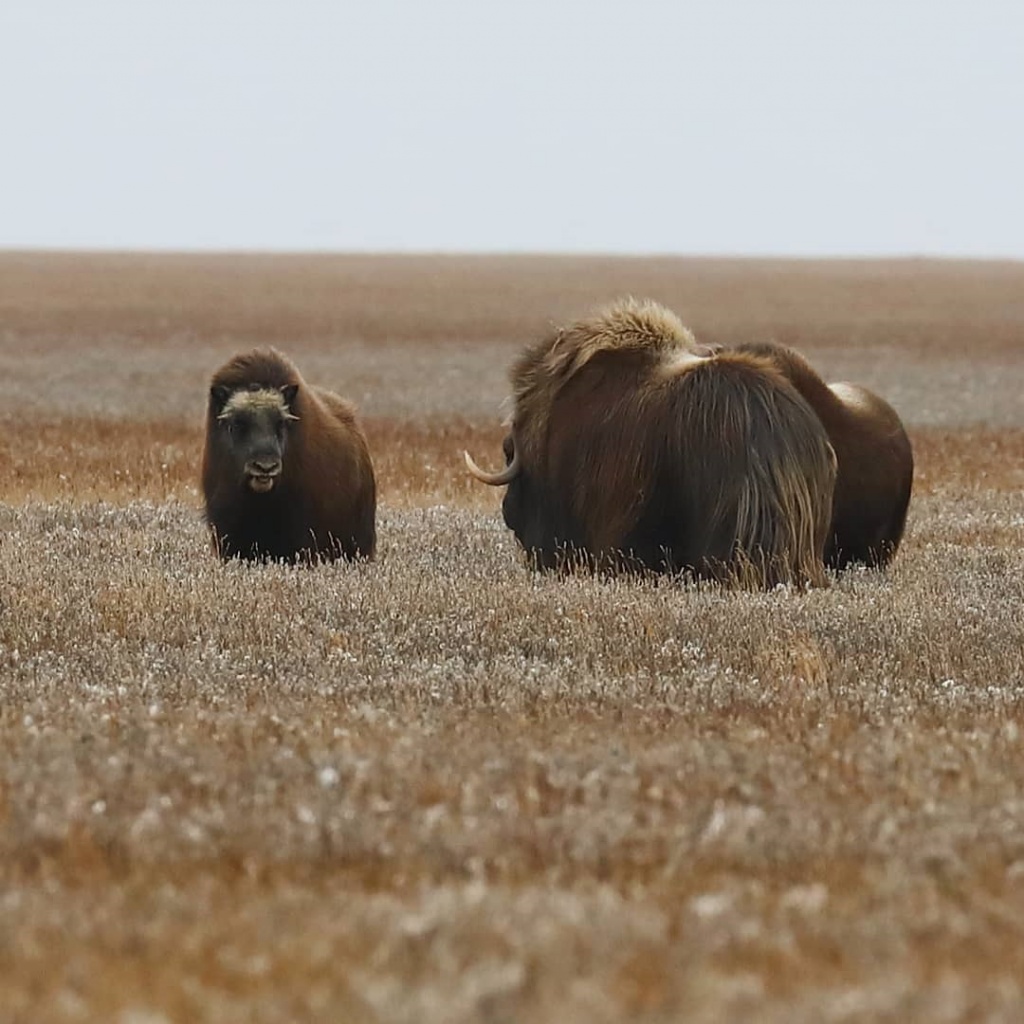
The question of the reintroduction of the muskox has been raised since about the end of the 19th century, but the projects could only reach real implementation in the 70s of the 20th century, when the Soviet Union began to negotiate the reintroduction of this species, first with Canada, then with the United States. Within the framework of the agreement, two groups of muskoxen were transported to the territory of the USSR, some of them were settled on the Taimyr Peninsula near the Bekada-Nguoma River, and some on Wrangel Island. You need to understand that this was the time of the Cold War, and many scientists were interested in such cooperation - where it will lead. For example, renowned naturalist and documentary filmmaker Gerald Durrell drew attention to this event and said that it was a good example of «when states can agree, even if not on an essential issue, and get a good result».
- And what came of this collaboration?
As a result, musk oxen were transported to the territory of the USSR. The first settlement of musk oxen in nurseries was on Wrangel Island. There they were first in fenced-off areas, then were released into the wild. Literally 10-12 years after the kick-off of the experiment, these animals successfully took root there.
- Please tell us more about the goals and history of the resettlement of this species?
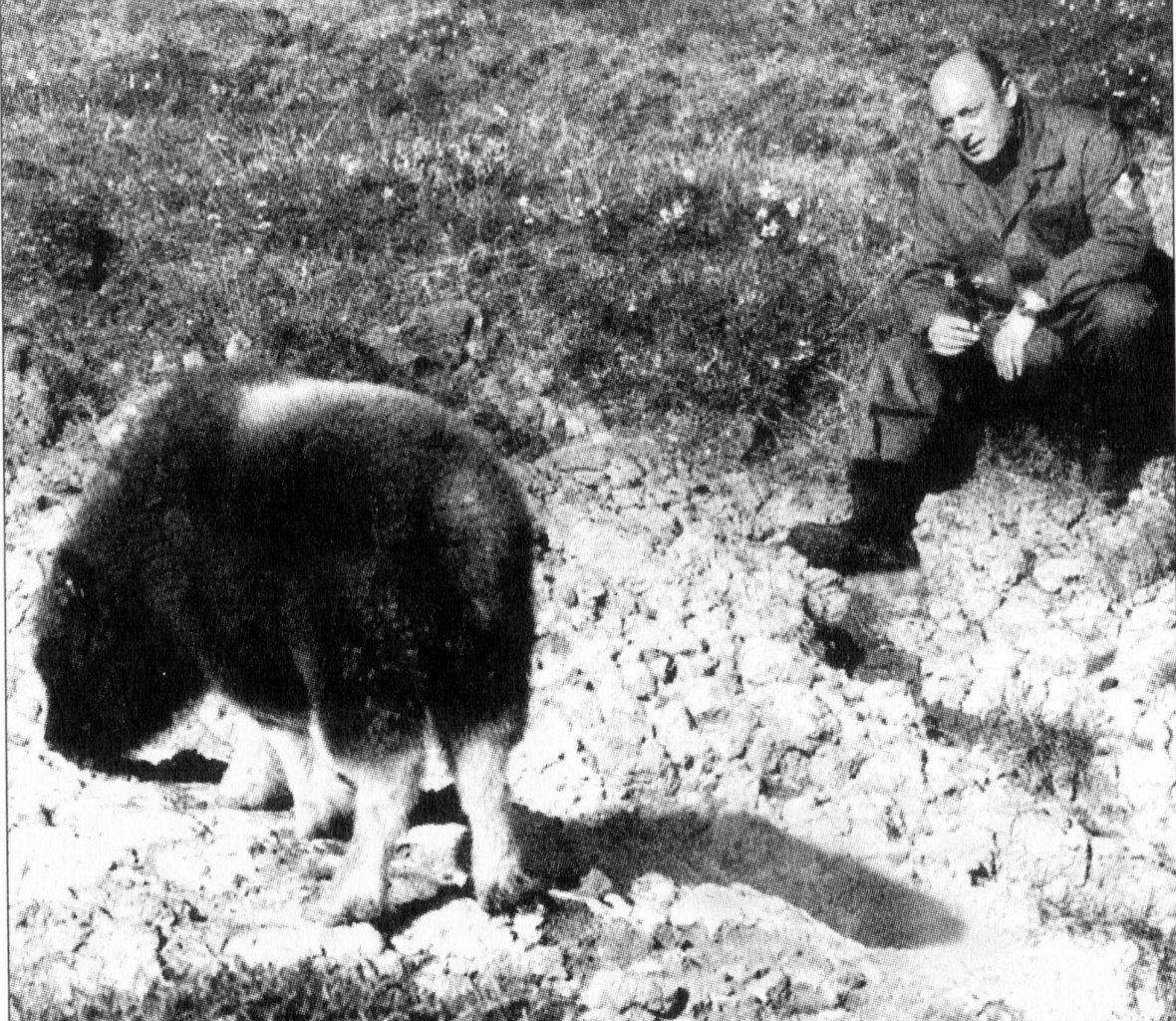
At first, there were several waves of resettlement to Yakutia. Then, at the end of the 90s, they settled in the Polar Urals - Gornokhadatinsky State Biological Reserve.
You know, zoologists always have an interest in increasing animal population and biodiversity. Moreover, it is believed that the musk ox was an animal of Eurasia, thus, this is not an invasion of an alien species, it is reintroduction.Moreover, local authorities also showed interest in such a project.
- As for the farms, were there any prerequisites for their creation?
The idea to create a farm with musk oxen appeared in the Soviet Union sometime in the late 1980s. However, the initiative did not go further than talk, although it was planned to create an experimental farm in the Altai mountains.
- Earlier you mentioned the Gornohadatinsky State Biological Reserve, can you tell us about the Ice Age Park project in its territory? It was not implemented. Why?
Of course. In the 90s, the authorities of the Yamal-Nenets Autonomous Okrug were interested in the initiative to create a so-called Ice Age Park, where animals of the Pleistocene era would thrive. It is clear, of course, that there are no mammoths (laughing), there are no cave bears, but you can find musk oxen. As a result, they were brought there. Also yaks, bison and other animals were moved there. However, an incident occurred with the bison.
- Which one?
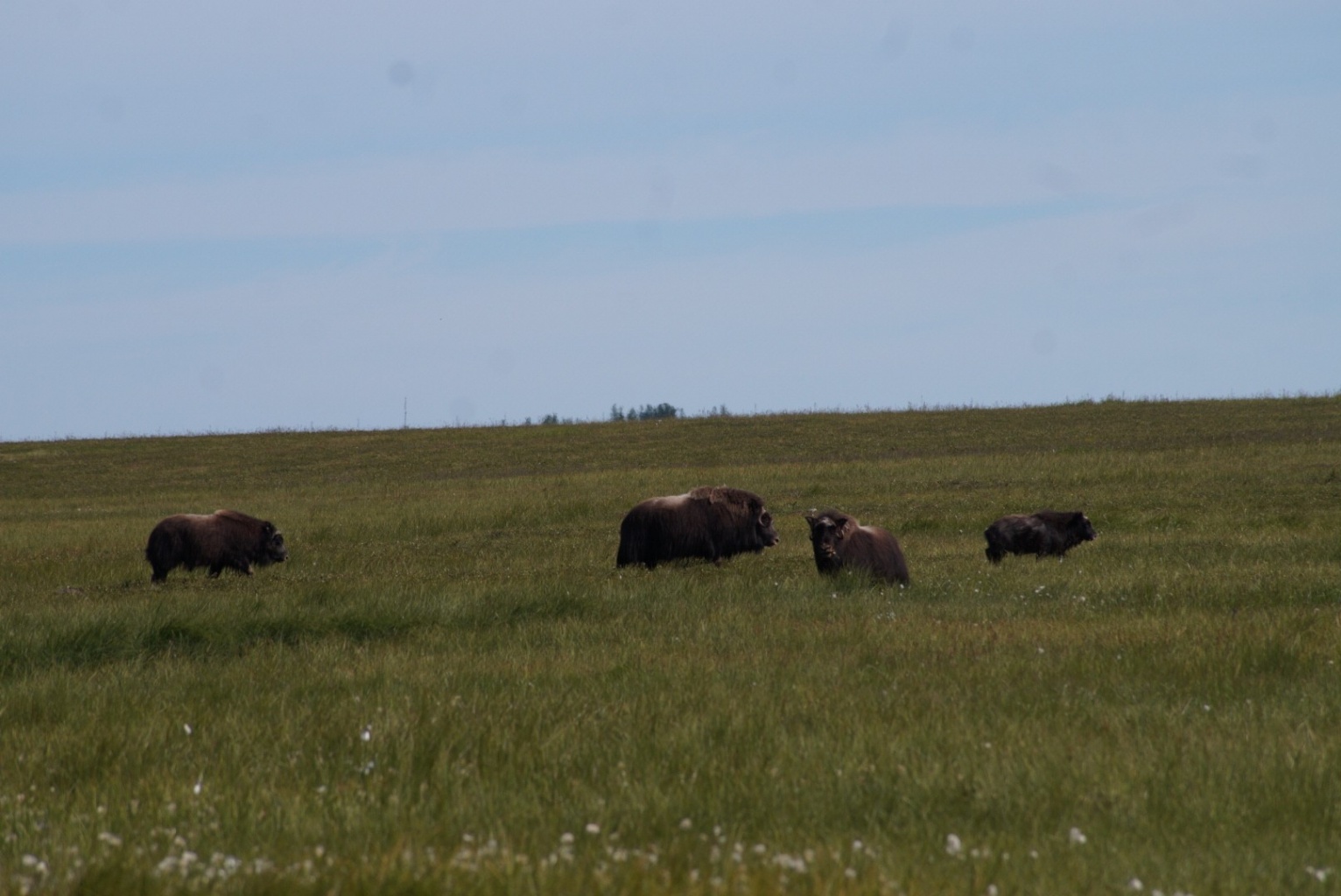
There were about 10 individuals on the territory, then only 5 bison were seen, and now they are gone.
It didn't work out very well with yaks either. Maybe the climate was not right. This is a domestic animal, and they are always less resistant to the external environment than wild ones. The yak has already got used to the fact that a person cares about it and its adaptation in the wild is, therefore, worse. There were no calves, all the females died. The last yaks are living out their days there.
- But did the muskoxen stay there?
Yes of course. Now the animals are free-range.
- Where can you see the muskox in Russia now and what opportunities are available for tourists?
The easiest place to visit is the Gornokhadatinsky section of the Polyarno-Uralsky Natural Park. Despite the fact that it is a protected and restricted area for visiting, tourists often visit it. The Bolshaya Khadata River and its tributaries allow kayaking. Usually, if tourists do not violate the rules of the reserve - moving in the reserve is carried out only with a guide - an employee of the reserve, you should notify about this in advance - then the administration meets tourists interests and allows you to visit this site. And there you can see muskoxen.
There are specialized travel agencies in Vorkuta. The city is located relatively close to the source of Hadata, and people usually go down the flow. In summer, there is beautiful nature, mountainous landscape ... and muskoxen.
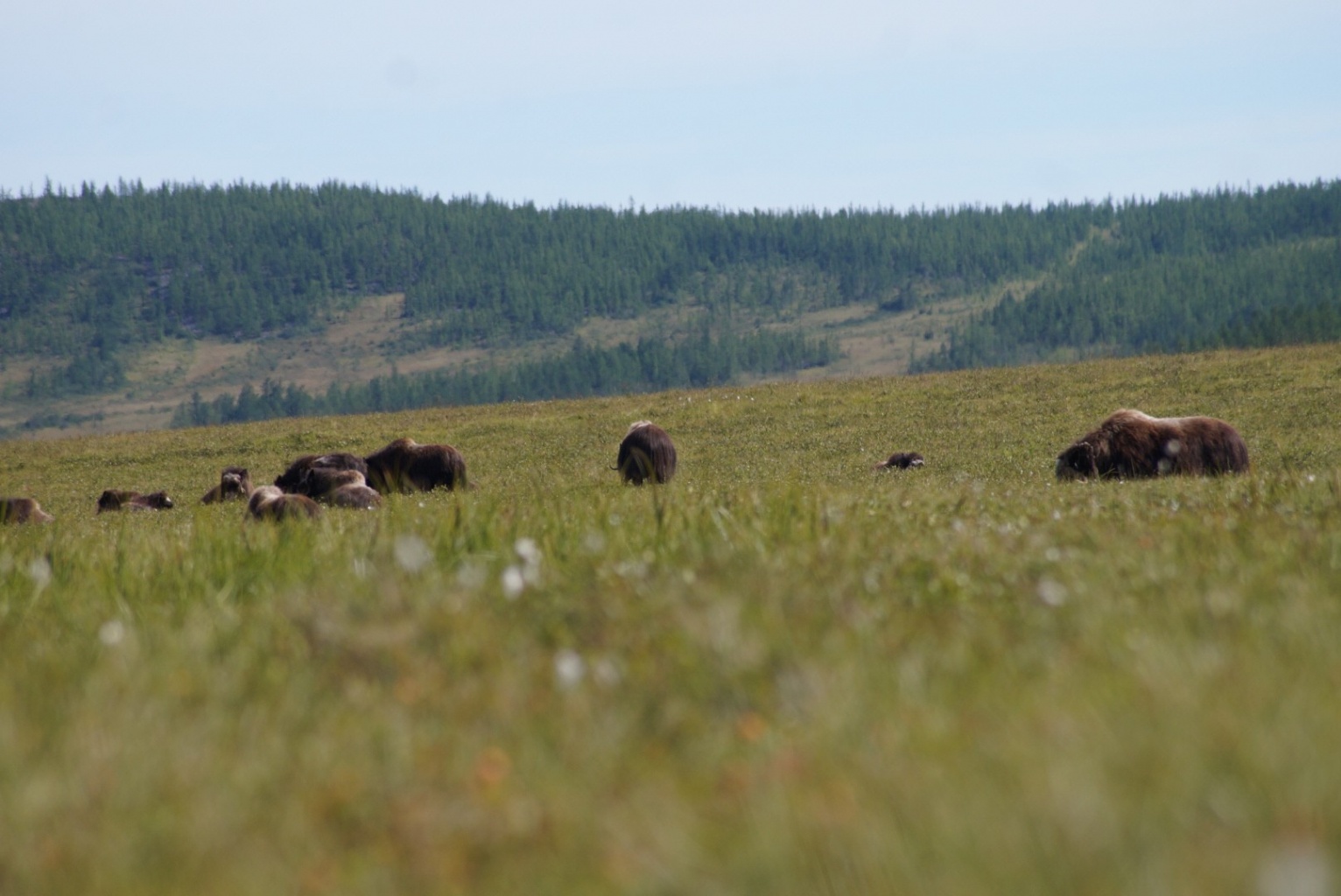
The second place to visit is the Taimyr Peninsula. Compared to the Gornohadatinsky reserve, which occupies a relatively small area, which guarantees a meeting with a muskox, the peninsula is vast with a large number of roaming animals. According to various estimates, there are from 5 to 8 thousand animals there. It is worth saying, of course, that they are concentrated over a large area.
There are also tours to Taimyr that almost guarantee an encounter with muskoxen. Tours are carried out by helicopter, so they are not budgetary, let's face it. If you choose this type of tourism, then direct communication with animals is impossible ... Although sometimes tourists can be found in tents, but rarely.
Also it is possible to visit the first muskox farm in Taimyr, which was recently created. It was organized by Denis Terebikhin. The farm has its own specifics - it is not located next to a large city, for example, Norilsk, but next to the small village of Volochanka. Rare peoples of the Nganasans live there with only a few thousand people. There is no industry, it is pristine pure nature. For more immersion, you can even stop and live in a сhum (ed. - a traditional conical dwelling/tent). This type of travel can rather be attributed to ethnotourism. This direction in Russia is just beginning to develop.
Muskoxen also live in Yakutia, but their domestication is now problematic, because the Yakuts recorded the muskox in their Red Book, and accordingly greatly limited the possibility of breeding it.
There is one interesting place - Zavyalov Island in the Magadan Region (ed. - an uninhabited island in the Sea of Okhotsk). There, with great financial support, they want to make a wildlife park. This object is attractive in terms of the beauty of nature, relief - mountains, rocks, the Sea of Okhotsk, you can even see whales! Diving is offered as one of the attractions.
The muskoxen were moved there quite successfully, now they move freely around the island. Since the territory of the park is small, meetings with the musk ox are also guaranteed. Now work is underway there, I think in two years it will be a popular destination for ecotourists, which will allow you to immerse into the wild, admire the ocean, merge with space.
Wrangel Island stands out in the list of popular destinations. Traveling there is very expensive and exclusive. Now, ships are operated to deliver tourists to the island, they launch boats and ferry people to the shore, where everyone is allowed to walk for several hours. Also, the administration of the reserve sometimes allows you to make a tour of the island itself.
Tourists do not come to Wrangel Island every year, it reveales the existence of vast uninhabited wilderness with about 50-100 people who were there before. And this is amazing!
This direction will interest a certain category of citizens who are looking for a special experience.
In addition, muskoxen are found in zoos. There are many musk oxen in the Moscow Zoo, in the Krasnoyarsk Territory, Nizhny Novgorod, in Yakutia in two cities and in Karelia, not far from St. Petersburg, where one musk ox lives.
Since we're talking about farms, how are nurseries different from muskox farms?
A nursery is still the place where animals or plants are usually grown for their study, but without the goal of obtaining financial or economic benefits, but a farm is created for agricultural products. It can look very much like a nursery. It's just that the goals are different.
- What do you think can attract tourists to such nurseries and farms?
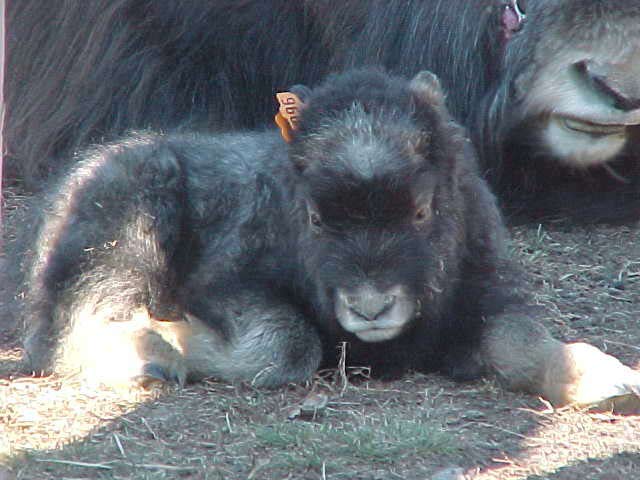
“When there are musk oxen next to you, you already feel much better in these dull spaces ... This is from a human point of view, but from a scientific point of view, I think ... our descendants will see herds, large herds of muskoxen grazing in these tundra.” This was said by Bronislav Borzhonov, a hunting expert who took part in the first experiment with muskoxen and «communicated» with them. The muskox has a pleasant effect on humans.
And the second quote: "Such a small muskox cub is the most charming of many types of ungulates, so when a person sees such a creature, regardless of whether he is a scientist or has some other specialty, he cannot but have sentimental feelings." ... Like that Christopher Schenk, an American scientist who also studied the musk ox, including in Taimyr, described this beast.
Thus, we see that the muskox is not just a fossil, which is interesting because of its rarity, but it is very attractive to humans. Whoever saw the photo of the cubs will agree with this. Of course, the muskox attracts the attention of tourists.
In Alaska, for example, it is a popular animal. And the farms that exist there, possibly Canadian ones, are developing agritourism, which is an important aspect of their activity. In Russia, people are also happy to go to nurseries that you can visit, then they upload photos with muskoxen on social networks.
- Well, what can you tell us about the safari parks?

Now they show great interest in musk oxen. For example, there are several projects in the Moscow region, and they are also working on this initiative in Siberia. We are contacted with requests for the relocation of muskoxen, but this issue requires different approvals.
- So how can a tourist decide where to go?
It depends on what the tourist prefers. For example, the Gornohadatinsky reserve attracts ecotourists. This is wild nature, a trip along the river, and at Denis Terebikhin's farm on Taimyr, ethnotourism prevails. It has its own spirit - indigenous peoples, their own culture, originality. And then there are muskoxen, which add «spice».
- If we are talking about ethnotourism, how is the local population involved in the development of projects for breeding muskoxen?
At the Taimyr farm, the indigenous population is the main component of the project. It was carried out with state money and aimed at the development of settlements of the small peoples of the North. The project creates jobs, attracts tourists, educates the public about the life, culture and traditions of indigenous peoples.
If this experiment develops, then it will be possible to carry out activities for the processing of qiviut (ed. - wool of a muskox), create products from it, sell them. It will also create additional jobs.
- Please tell us more about the qiviut? How is it produced?
Very simple. Usually, the animal itches, rubs against stones, bushes, thus shedding the undercoat - qiviut. Then it is collected and processed.
When the animal gets used to people, it is possible to groom the animal in special enclosures.
- Are there any qiviut processing factories in Russia?
No, there are no qiviut processing factories in Russia now. The reserves do not set the task of obtaining products. There was, however, the first attempt - at the farm in Taimyr. Now we have made yarn and are trying to interest enterprises with this product. The potential, however, is huge, this direction could be developed.
- Is it true that the yarn is softer, lighter and warmer than cashmere?
Yes, very soft! (Smiles) The products are very delicate and airy.
- What potential does the sector have for the development of domestic tourism?
The potential is enormous. However, it should be clarified that a more developed infrastructure is needed. This is both proximity to major cities and vehicles for travel.
Muskoxen can also be inhabited in the highlands, because the higher in the mountains, the colder, and muskoxen could live at a certain altitude. But it is clear that this is aimed at a certain category of tourists who are ready and able to travel there.
- Could foreign tourists be interested in Russian farms?
Of course. And they are very interested!
In Taimyr, for example, the helicopter tour is very popular. People come there over and over again!
There are no administrative barriers, but the question is who is ready to test their stamina and who is willing to pay so much.
- What problems are farmers facing at the moment?
You need to understand that musk breeding is not yet fully mastered. We can, of course, use the experience of the Americans or farms with other animals. But yet, this profession is still young, and we need to learn ourselves.
For example, for other animals - cats, dogs - everything is already invented - food, veterinary clinics. And for the muskox it is just the beginning!
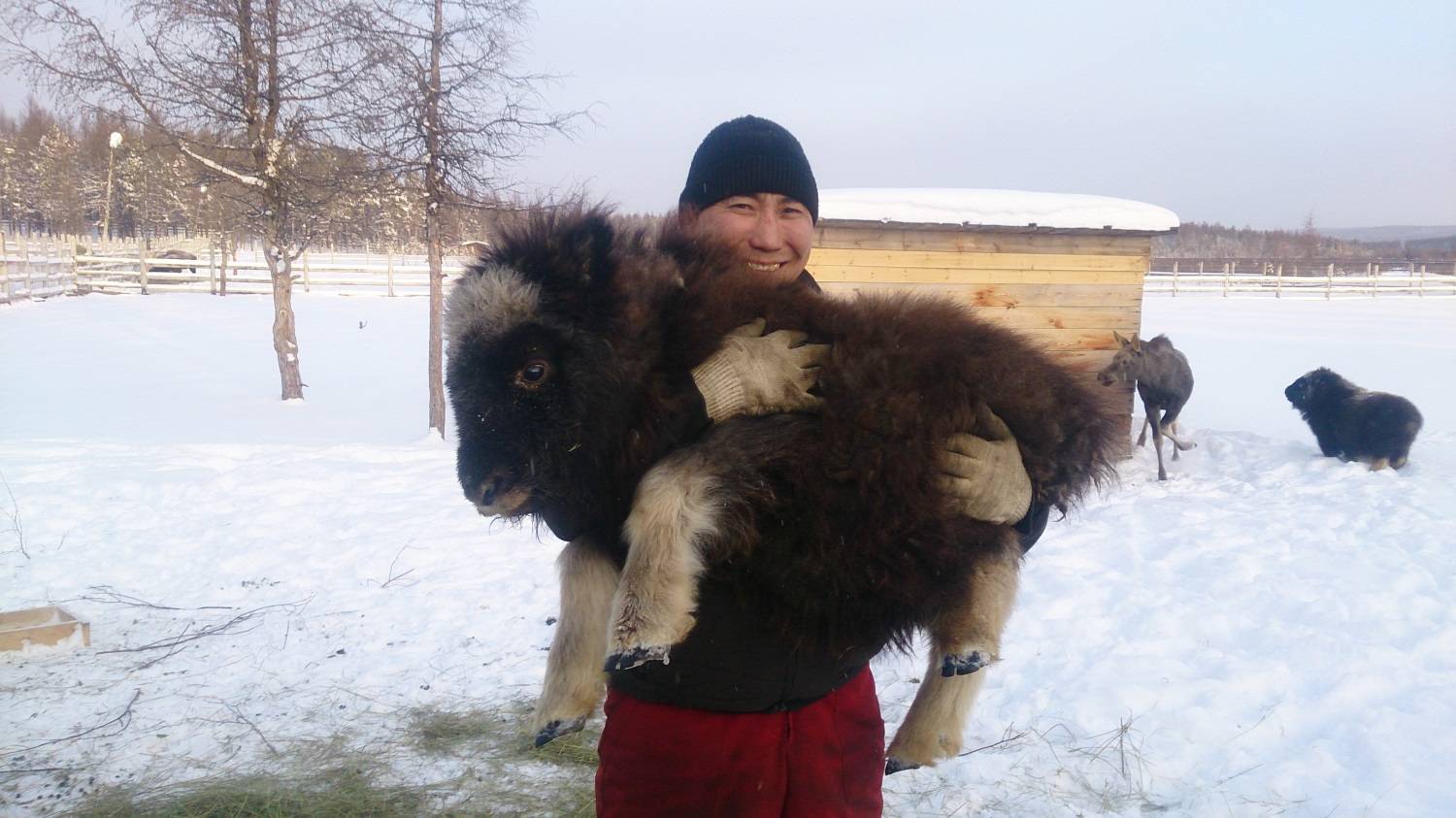
In the Gornohadatinsky reserve, musk oxen get food themselves, although they are still fed additionally. And the territory of the farm is smaller, which means that there should be more feeding. Undoubtedly, on the way to mastering a new profession, there will be problems with the adaptation of the American experience in our conditions. And they are just beginning to be addressed.
- Can you compare the content of musk oxen abroad and in Russia?
Of course. The two muskox farms in Alaska are more accessible in terms of visiting, supply, infrastructure. They are located near Anchorage, which is the largest city in the state. Accordingly, these farms are within reach. In America, agritourism is more developed, and this is like visiting an ordinary farm, but with muskoxen.
In Russia, we attract by exclusivity. The tourist finds himself in a different era, enjoying space and freedom. And these are completely different feelings and emotions!

